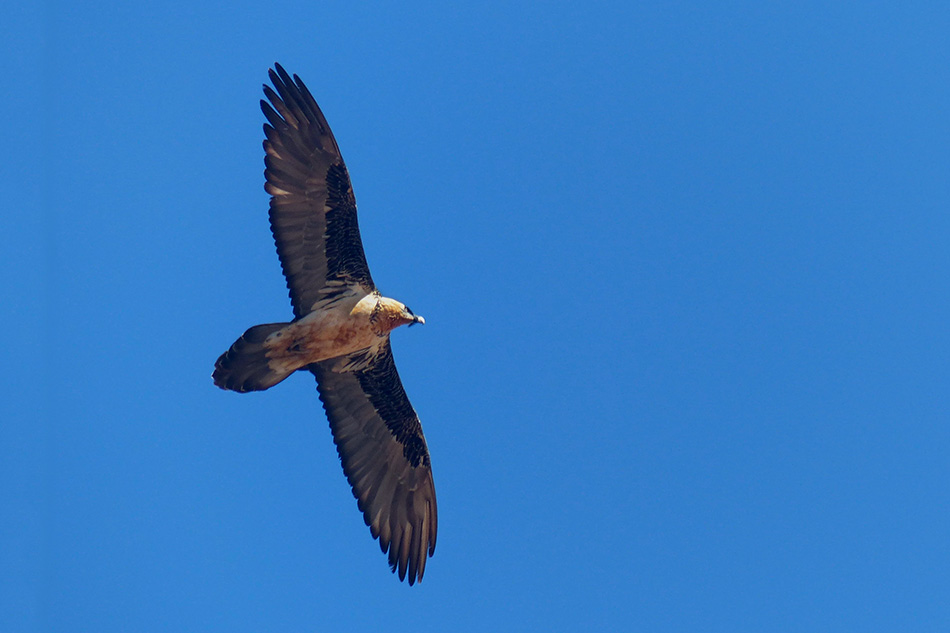 "
"
The Bearded Vulture (Gypaetus barbatus) is also known as the lammergeier. It is classified as Near threatened in the IUCN Red list. It is distributed along the high mountain ranges of Europe, Africa, Caucasus, the Indian Subcontinent and Tibet, naturally occurring at low densities all across its range. It is monogamous and breeds once a year, laying two eggs.
Unlike most vultures, lammergeiers do not have a bald head. This is primarily due to the fact that they feed almost exclusively on bone and bone marrow and hence the chances of getting blood and other organs sticking onto the feathers is minimal. The species forages over vast distances (up to 700 km in one day has been recorded), using a soaring flight. A large proportion of its diet is comprised of bones (as much as 85%) from which the bird gets nutrition from the marrow inside. Lammergeier are known for their unique ability to drop the bones stripped from carcasses from a height in order to shatter the bone and expose marrow. They are even believed to have favourite breaking spots.
The picture above was taken on Mughal road (Shopian – Peer Ki Gali), which passes through Hirpora Wildlife Sanctuary, located in Shopian district of Kashmir, 70 km south of Srinagar.

 CI is a non-profit, non-commercial portal that aims to facilitate wildlife and nature conservation by providing reliable information and the tools needed to campaign effectively.
CI is a non-profit, non-commercial portal that aims to facilitate wildlife and nature conservation by providing reliable information and the tools needed to campaign effectively.



Chosen as 'Picture of the Week'
A large proportion of the lammergeier's diet is comprised of bones and they are known for their unique ability to drop them from a height in order to shatter the bone and expose the marrow.